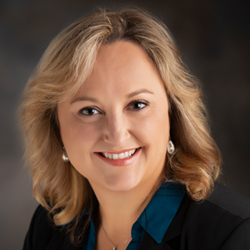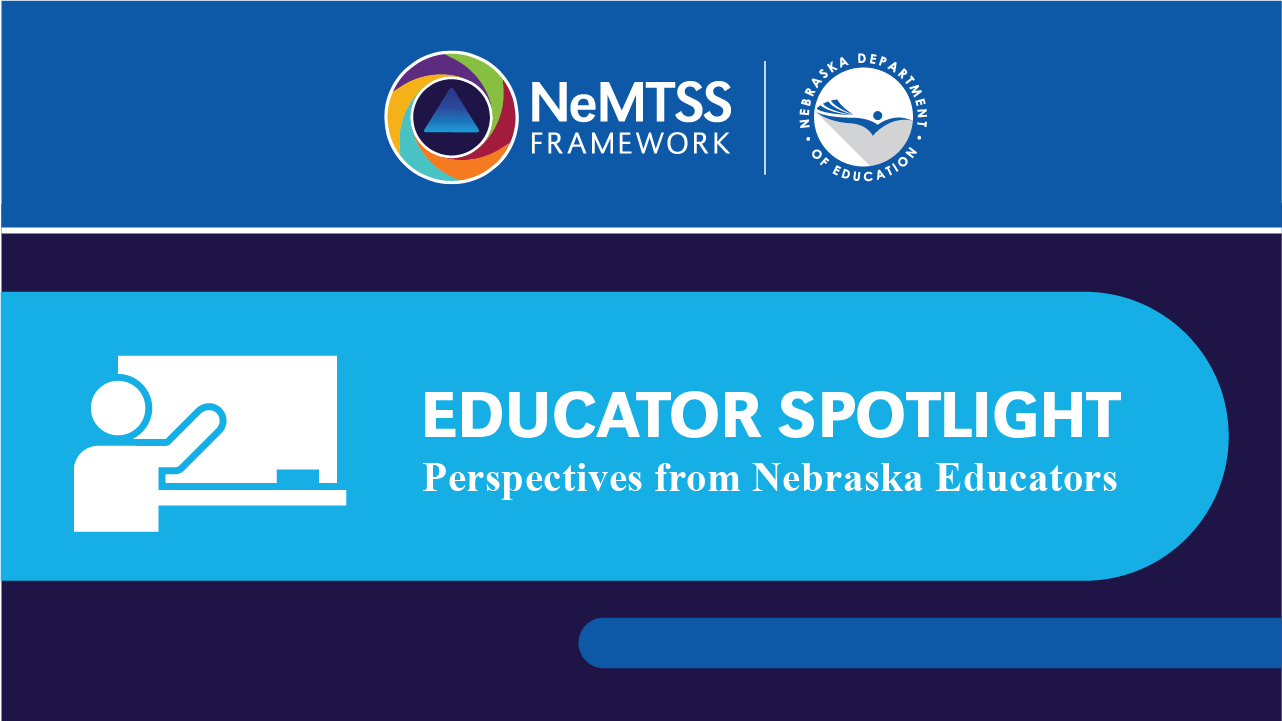
Chelsea Feusner, Director of Pre-K through Grade 5 Education
Kearney Public Schools
Kearney, Nebraska
How long have you been in education?
Chelsea Feusner: 16 years
Can you briefly describe your work with NeMTSS?
CF: As a district leader, I sit on our Kearney Public Schools (KPS) District MTSS committee. MTSS drives our decisions every day. I also wrote my dissertation and research on the implementation of MTSS in Kearney Public Schools.
How do you use NeMTSS principles in your daily work?
CF: I review data, processes and decisions daily and align all of it to our continuous improvement efforts with MTSS. I focus on the Essential Elements by building shared leadership among my principals and teams; communicating with stakeholders; reviewing research and high-quality curriculum; discussing and reviewing assessment data to support interventions, and supporting our team’s efforts to build capacity and infrastructure.
What were your feelings about NeMTSS before you began working with it?
CF: During my teaching career, I have had the opportunity to work in different sized school systems and teach preschool through post-secondary. Each school had disparate processes and supports in place to serve students. Five years ago, KPS began implementing MTSS. I became interested in how this model would support my goals and students’ academic, behavioral and social-emotional needs. I was skeptical at first and believed this was just a new acronym for protocols we already had established. An Educational Service Unit (ESU) professional developer provided the initial MTSS training. She explained that MTSS is a model for all students that includes multiple tiers for academic and support services.
The model emphasizes data collection and continuing, ongoing assessment. The outcome of this process will establish a structure for academic, behavior and social-emotional supports for students. The MTSS process for social, emotional and behavioral support marries PBIS, RTI and special education. We still have a long way to go, but our processes and supports are starting to align with all areas to maximize student learning.
What would you tell educators who haven’t heard of MTSS yet?
CF: It is a process. It takes time, but the end goal is to align processes to support ALL students and ALL teachers.
What is a goal you have for yourself, your building, or your classroom that MTSS can help you reach?
CF: My goals are to continue to build capacity and use data to drive decisions that support our students. I also continue to look for ways to improve our system processes to better prepare teachers and administrators so they can spend their time teaching and learning.



